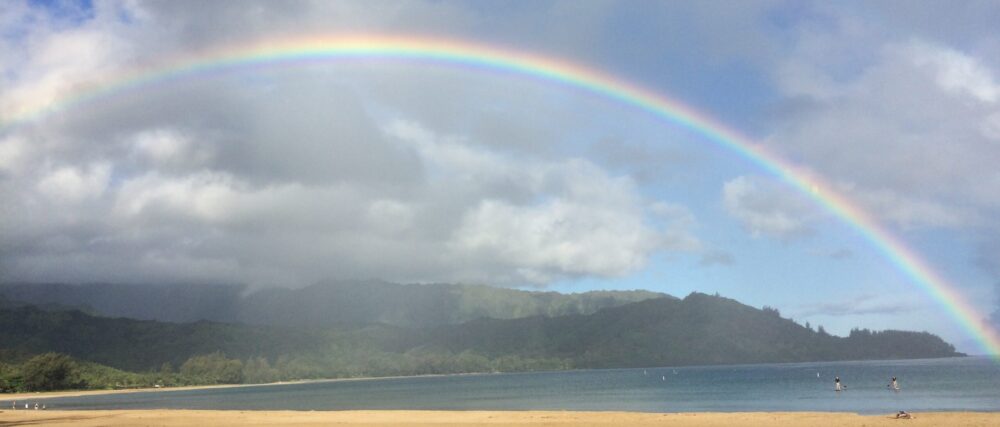Breathe in the Buddha, weathered and worn but still flashing that beatific smile, he knows something that we don’t know. His once gilded body is now covered in bare patches, bleached bone white by years in the sun. Nothing lasts forever so one day our Buddha will be all white, his golden body just a memory.
Breathe in this redwood tree, a mere infant by redwood tree standards. From its humble beginning as a tiny seedling that sprouted from a patch of mulch in our backyard to its current height of nearly fifteen feet, this tree is a testament to persistence, it clearly wanted to grow here. Breathe in the hundreds of pale green fingers of springtime growth that cover the tips of it’s branches. I feel the joy that our little redwood tree feels as it’s crown reaches skyward to catch the first rays of morning and the last pieces of the sunset. This tree’s trunk is straight and strong, it’s upper branches already a master of the wind dance.
Breathe in the sounds of this fountain, the centerpiece of Carol’s inspired new Zen garden that she recently created in the midst of a small triangular shaped bit of wasted space behind a shed in the far corner of our yard. Where there were once just weeds and rocks, old scraps of wood and the rusting bones of Sam and Denali’s first two-wheeled bicycles, has now risen a peaceful space ideally suited for quiet meditation. The fountain is solar powered and requires the sun’s rays to give its waters their voice. I close my eyes and breathe. This fountain’s song is a creek tumbling over polished stones as it makes its way through the forest, it’s the sound of the receding surf flowing back over thousands of shimmering sea stones, a symphony of aural psychedelia.

Breathe in the songbirds of spring that call our yard home. The brilliant yellow hooded oriole, the mockingbird, the tiny titmice and finches, towhees and robins, the zip, zip, buzz of the hummingbirds, the chattering call of the woodpeckers. Our fountains and feeders, trees and bushes offer our avian companions everything they need. If I were a bird I’d definitely live here! Our cat Ella is bemused by it all. She’s no threat to the birds and seems content to just sprawl on the deck in the sun and watch them go about their business. Living here for over two decades, we’ve become very acquainted with the ebb and flow of our birds throughout the year and their seasonal dances as they come and go.
Breathe in the chimes, they’re just pretty ornaments until the wind gives them voice and the music begins. Like clockwork the wind picks up every day in late afternoon and the songs of our chimes fill the air. From the high tinkling sounds of the smallest to the deep and sonorous tones of the largest, they sing together in harmony, celebrating the ebb and flow of the wind, the clean fresh air, the blue sky and foggy mornings, the blessing of this glorious green spring and the gift of another day.
Breathe in the cloud dance, a slow motion serenade across an impossibly blue sky on this serene late afternoon in May. The crows and ravens are black V’s as they and the clouds glide together with the wind. I spy a heart-shaped silver balloon sailing way up there with them. The last rays of sun illuminate a bright red heart at its center. Love on the wing. The tops of towering eucalyptus trees shimmer and sway as they join the clouds and the birds. I’m in shadow now but up there the sun is still shining, the tops of these majestic trees have the honor of bidding this day a final goodbye. Namaste.


